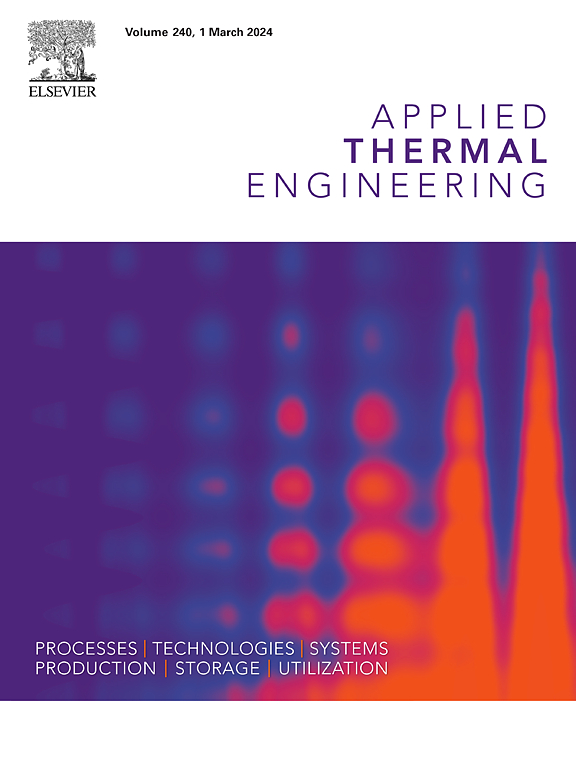Heat transfer characteristics of single-phase flow through dimple plate heat exchanger
IF 6.1
2区 工程技术
Q2 ENERGY & FUELS
引用次数: 0
Abstract
Dimple plate heat exchangers featuring with continuous-curved surface between adjacent dimples have garnered attention due to lower material consumption and lower internal volume compared to the conventional herringbone plate heat exchanger. However, a comprehensive analysis on thermal–hydraulic performance under different dimple parameters is still lacking. This study experimentally investigates the heat transfer characteristics of water flow in three dimple plate patterns (depth: 1.2 − 2.0 mm; pitch: 5.2 − 7.6 mm) with inlet hot- and cold- water temperatures at 70 and 50 °C, mass flux of 50 − 1000 kg⋅m−2⋅s−1. The simulation was conducted under even broader conditions, with mass flux ranging from 20 to 465 kg⋅m−2⋅s−1, encompassing a wide range of dimple depths (0.7 − 1.5 mm) and pitches (2.8 − 7.6 mm). The results indicated that heat transfer coefficient increased by 40 % and 80 % maximum at the same Reynolds number as the dimple depths and pitches ranges 0.7 − 2.0 mm and 2.8 − 6.0 mm, respectively. The surrounding flow and symmetric vortices among dimples instead of swirl up-and-down flow in the herringbone corrugated channel was initially identified based on different combinations of dimple depth and pitch. Laminar flow transition to turbulence was detected at a Reynolds number of approximate 300. Finally, a new correlation for the Nusselt number was developed using 118 data points, with a mean deviation of 7.6 %.
求助全文
约1分钟内获得全文
求助全文
来源期刊

Applied Thermal Engineering
工程技术-工程:机械
CiteScore
11.30
自引率
15.60%
发文量
1474
审稿时长
57 days
期刊介绍:
Applied Thermal Engineering disseminates novel research related to the design, development and demonstration of components, devices, equipment, technologies and systems involving thermal processes for the production, storage, utilization and conservation of energy, with a focus on engineering application.
The journal publishes high-quality and high-impact Original Research Articles, Review Articles, Short Communications and Letters to the Editor on cutting-edge innovations in research, and recent advances or issues of interest to the thermal engineering community.
 求助内容:
求助内容: 应助结果提醒方式:
应助结果提醒方式:


